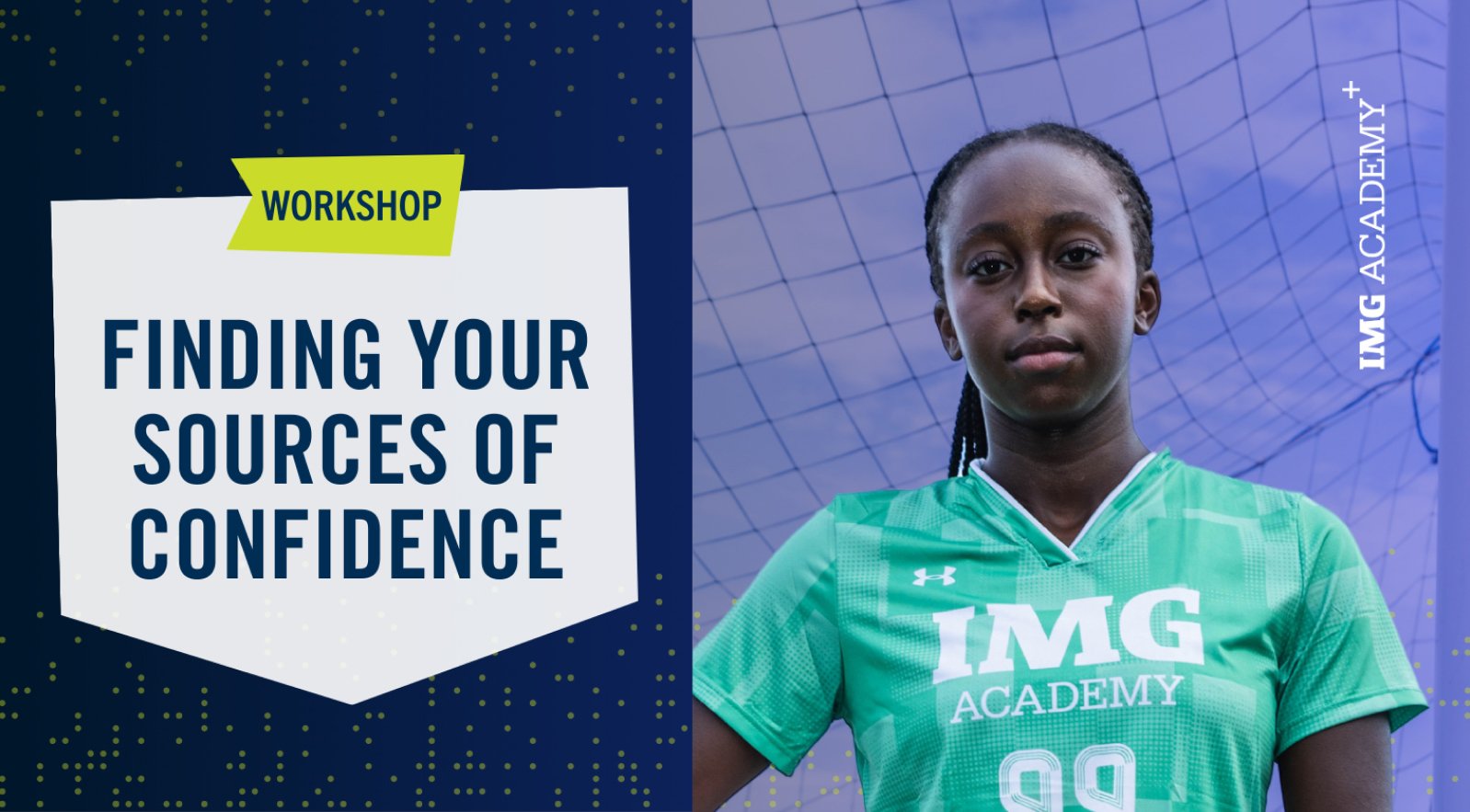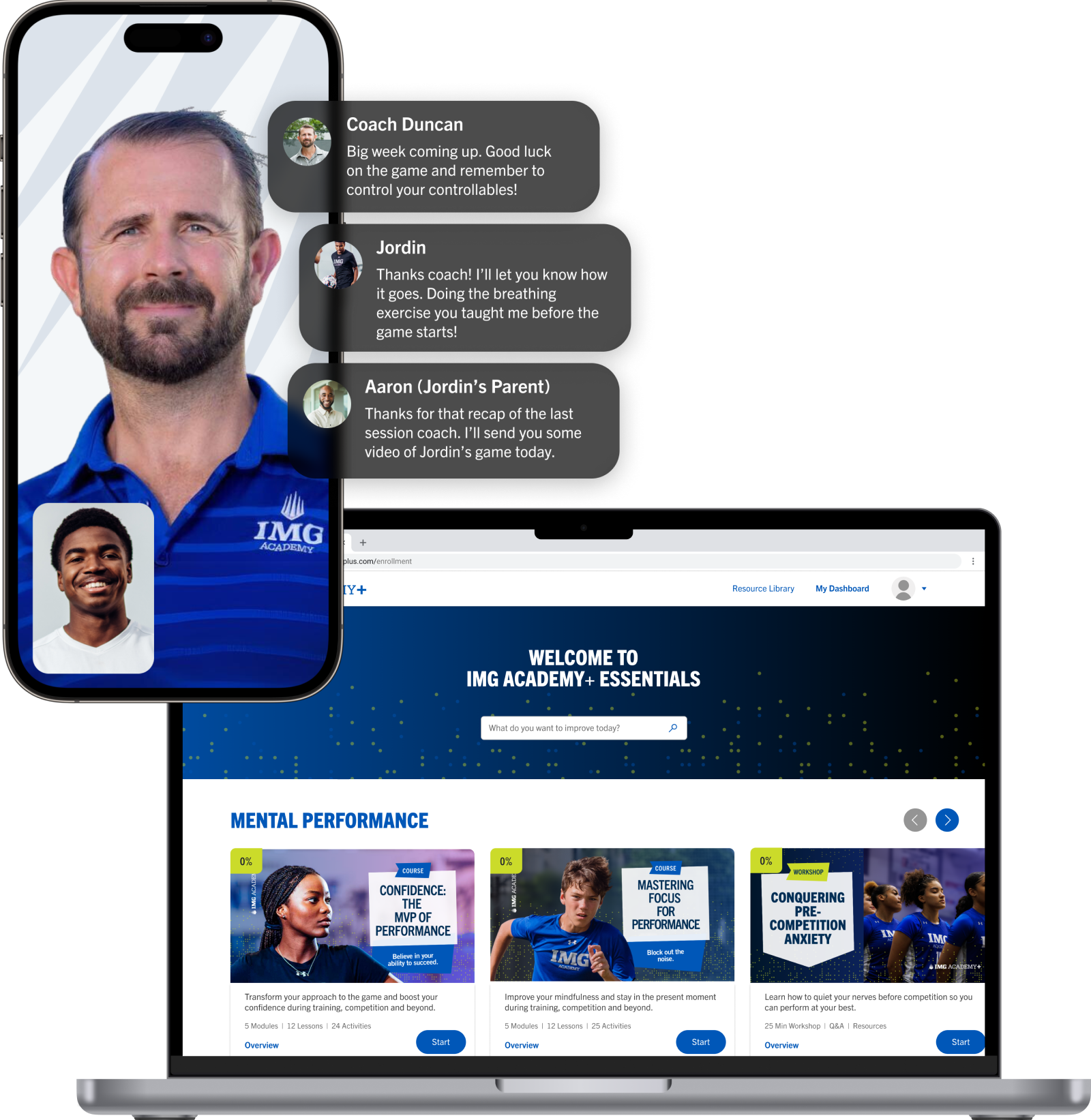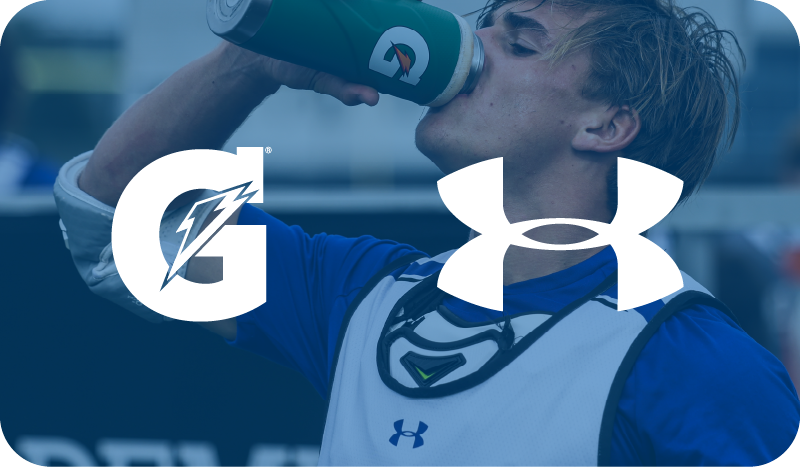Goal setting is a valuable tool for student-athletes. They may want to win a championship or get a college scholarship, but hitting that distant mark can seem daunting. Goals can bring things within reach by breaking down bigger objectives into incremental steps. With each win along the way, a student-athlete's confidence grows, and so does their success rate — on and off the field.
Through classroom workshops and one-on-one sessions, Maddie Petry helps student-athletes set goals. Petry, a senior mental performance coach, works with the girls lacrosse and girls soccer teams at IMG Academy. She speaks to her student-athletes about the importance of goals, how to set them, how to review them, and how to revise them, so putting her student-athletes in the best position to achieve what they want.
In its most basic form, goal setting is having an objective and striving toward it with intention and practice, Petry says. She shares some of her tips for doing that here.
Why Goals Are Important for Student-Athletes
Goal setting can be used to develop skills and improve skills, whether they're physical or mental. By repeatedly setting goals, achieving them, and setting new ones, student-athletes can build self-assurance and resilience inside and outside their sport.
When Petry meets with student-athletes, she breaks down the two types of goals: outcome goals and process goals.
An outcome goal means having eyes on the prize, whether it's winning a championship, setting a personal record, or being named MVP. Although they can be exciting and motivating — and Petry encourages student-athletes to go for them — these types of goals also have the potential to fizzle when outside factors don't fall into place.
Process goals, on the other hand, are the road map to the outcome goal. Process goals break down outcome goals into smaller, achievable steps. These types of goals also give student-athletes a sense of control, which is a key to mental performance.
"We want to get that win every time we're playing," Petry says. "But if we can break that down into more of a step-by-step and how we're going to follow through with it, that can give a student-athlete a lot of confidence. It's like, ‘I know I'm striving toward that big outcome. Here's what I can do in the moment to increase the likelihood that it actually takes place.'"
The Key to an Effective Goal
You might have heard that goals should be SMART: specific, measurable, attainable, realistic, and time-bound. Petry doesn't disagree that the SMART approach is effective, though she says her top priority for student-athletes when setting goals is for them to have ownership of the goal.
Student-athletes are more likely to become invested in a goal and motivated to achieve it when they make it personal rather than center it on what another person wants for them.
"If a coach is coming at a student-athlete and saying, ‘You should be going for X, Y, and Z,' that's important guidance," she says. "But ultimately, I want the student-athlete to be bought in, to be invested in it as naturally as they can be, because there's going to be that hook."
By focusing on internal motivating factors — intrinsic motivation — student-athletes have a greater understanding of what's important to them and why they're striving for the things they want to accomplish, Petry says. This ties directly to confidence.
"There is a danger in setting up a goal based off of other people or external factors that typically come from extrinsic motivation, because we can't control them," she says. "The notoriety, the fame, the college scholarship are all great things, but if that is the only reason we're setting the goals that we are, we're going to miss out on an opportunity for our goals to be more deeply rooted in what matters to us, what has us striving forward, what we consider important in terms of our values, and how we show up on the field every day."
Breaking Down Bigger Goals
A big, lofty goal can be a good place to start with goal setting, but it shouldn't end there. Victories or accolades might not materialize despite a student-athlete's best efforts, which can be demotivating in the short term and erode confidence over time. So, Petry encourages her student-athletes to get in the habit of setting small goals, even during the course of a game.
"I love for my student-athletes to strive for that win, for that championship, whatever it might be at the end of the season, but ultimately I'm going to steer their focus to what we are doing daily," she says. "They're practicing for two hours a day, they're lifting three times a week — they're spending a ton of time in their sport — and so to be able to tap into their motivation and their confidence on a regular basis, giving them the sense that they're in control every day, that's where I find a lot of success for my student-athletes."
Student-athletes can also use goals more broadly to chart their progress and foster confidence. For example, Petry has encouraged track and field athletes to refer to their training logs before a race to see how far they've come and what they've achieved.
The Ultimate Goal of Goal Setting
Eventually, goal setting must become something that student-athletes do internally, so that it becomes a sustainable means to success in any venture.
"If we can teach a student-athlete to utilize goals for themselves, being able to have that awareness of ‘OK, what should I focus on in this moment?' that's a really powerful thing for them to be able to experience," Petry says. "And it's one of my favorite moments here, to see my student-athletes do that."
Looking to build confidence in your student-athlete? Sign up for the IMG Academy+ Confidence on-demand course.
Sign Up










